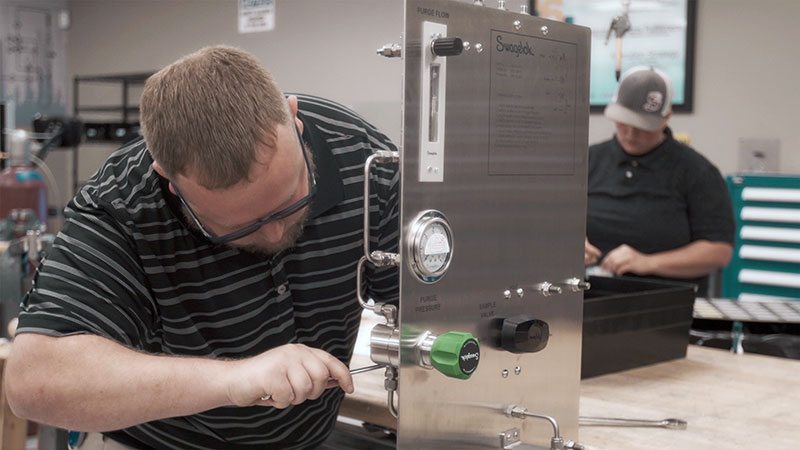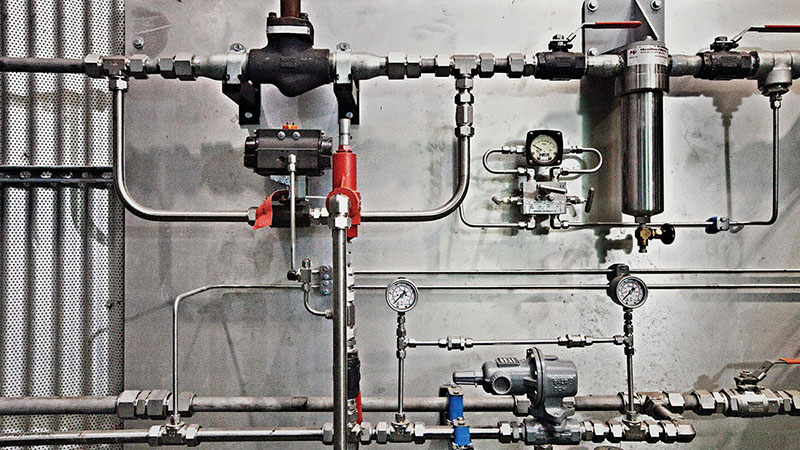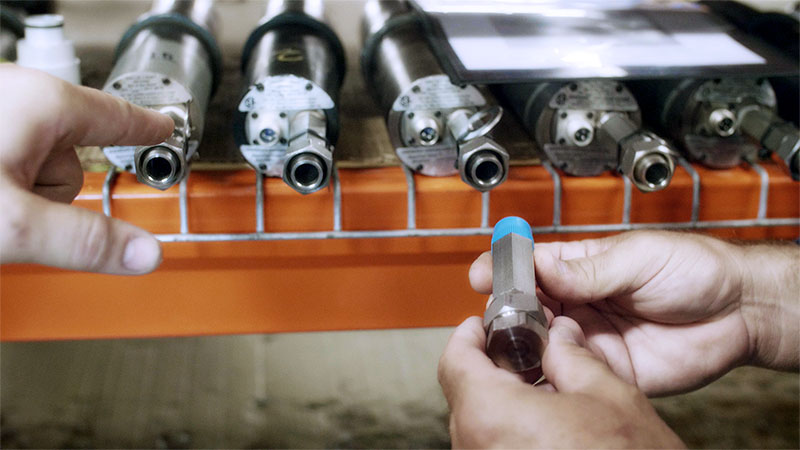July 2020, Vol. 247, No. 7
Features
Custom Adapters, Tubing Eliminate Leaks, Allow Retrofitting
By Lawrence Crynes, Oil & Gas, Swagelok Company
The stakes are high when it comes to component performance in the natural gas pipeline industry. If components fail, both the environment and nearby human lives are at risk.

To protect both, the Environmental Protection Agency (EPA) created U.S. National Ambient Air Quality Standards, which are designed to reduce fugitive emissions and better protect human health and welfare in areas where pipelines operate. The standards have resulted in significant reductions in harmful emissions in the United States, particularly in heavily populated areas and those close to pipelines.
Such fugitive emissions are an especially persistent problem at compressor stations in which legacy engines are used to help move natural gas along miles of pipelines between production, processing and distribution points.
Older engines, some of which date as far back as the mid-20th century when emissions regulations were far more lenient than today, are prone to leaking nitrogen oxide (NOx) and carbon monoxide (CO). That’s when Hoerbiger Engineering Services (HES) steps in to help significantly reduce emissions by designing and managing complex reciprocating gas engine retrofit projects across entire compressor stations.
“We mainly reduce emissions on legacy engines that are no longer manufactured as new,” explained Paul Watts, HES project engineer. “To do so, we have to change the fuel system on the engine. Some of these engines were installed in the 1940s, but they’re still pumping gas across the country on the pipeline.”
To complete the engine retrofits, HES has come to rely on specially designed fuel injector adapters from Swagelok that provide leak-tight connections to eliminate fugitive emission worries. In addition, the company is providing a variety of preassemblies and subassemblies, control panels, and nitrogen purge panels to enable efficiencies as the company retrofits engines to help pipeline operators remain in compliance with air quality standards.
Modernizing Gas Pipelines
HES, a division of Zug, Switzerland-based Hoerbiger, focuses on the midstream natural gas industry. The company makes emissions and performance upgrades to large-bore gas-fired engines, typically with the goal of modifying a legacy engine to perform equal to, or better than, a new engine. Safe, reliable performance with lower emissions is the ultimate goal, which must be balanced with economic considerations.
“There are a lot of financial drivers for our customers,” explained Hans Mathews, HES general manager and senior vice president. “It’s one-third or less the cost of replacement to simply upgrade the equipment to meet the most modern standard. We make reductions in NOx emissions that are on the order of 95% to 97%. We reduce CO emissions on the order of 80% to 90% – and generally without any impact on fuel economy.”
Sourcing Adapters
As emissions regulations continued to grow in stringency, companies began to run into challenges involving fuel injector adapters for engines. The adapters are used to mount electronic pre-chamber control (EPCC) valves to the engines.
The EPCC valve is a small electronic fuel injector that electronically controls fuel to a pre-chamber, providing a precisely controlled flame ignition source that is more reliable than a spark ignition source. It helps to mitigate emissions via better air/fuel ratio control.
The fuel injector adapters serve a critical role and therefore must meet exacting performance standards to ensure efficiency, reliability and safety. After trying various adapters from local machine shops and experiencing sealing problems, the company turned to Swagelok Custom Solutions for help.
HES is now using a custom Swagelok adapter to mount EPCC valves to engines using tube-fitting connections. The adapter is designed to handle the extremely high temperatures of the fuel injection system. It features a very small, straight and consistent diameter path to enable precise flame ignition control.
Most importantly, the adapter does not leak due to the use of a two-ferrule tube fitting connection, which provides a hinging and colleting action that securely grips the tubing and keeps the fitting from backing off and leaking when subjected to vibration. Eliminating leaks not only removes the issue of fugitive emissions, but also enhances safety for system operators.
“Of all the connections we’ve tried, the Swagelok connection is the most robust and reliable connection we’ve used,” said Watts.
Fulfilling a Need
The inherent dependability of the supplied components and assemblies has significantly reduced its number of failed parts – reducing labor costs and improving the rate of reliability.
“It was a gamechanger for us because we no longer had to buy 15 so we could break five,” Mathews said. “We could buy 10 and have 10 work. When they shut a pipeline down and go in there and retrofit a compressor engine, they need to be up and running when the compressor company says ‘go.’ They can’t wait an extra day. We’re talking hundreds of thousands of dollars if they miss a deadline.”
Ensuring Connections
Focused on its customers’ bottom lines, HES strives to increase the efficiency of its engine upgrades to enable cost reductions. One efficiency the company realized quickly was to use tubing as opposed to piping to make the majority of its component connections.
This choice saves customers the added expense of the more labor-intensive process of welding sections of pipe together and then painting the piping, which requires abrasive-blasting the piping and then applying a protective anticorrosion coating.
Eliminating these steps saves significant costs for operators. Given the higher pressures used in compressor applications, the switch to tubing and the leak-tight tube fitting also provides safety enhancements.
To select the right hose for an application, one must focus on the maximum allowable operating pressure (MAOP) for the application. Hoses and other components must be rated above that threshold to ensure safety. For example, metal hoses with a braided steel reinforcement are used for high-pressure gas applications. The braiding offers additional strength as well as abrasion resistance to enhance safety.
Cleaner Air
In this pipeline application, as well as in the oil and gas industry in general, component failure can mean the difference between a healthy environment and a damaged one.
“Air is not stagnant,” said Mathews. “The air in Georgia started somewhere over in Texas, or the air in Ohio came from California or Mexico. All along the way, that air is picking up every pollutant in between. The cleaner the air is, the better for everybody. To be able to benefit the environment and the people that live on the planet, it makes me happy and very proud of what I do.”







Comments